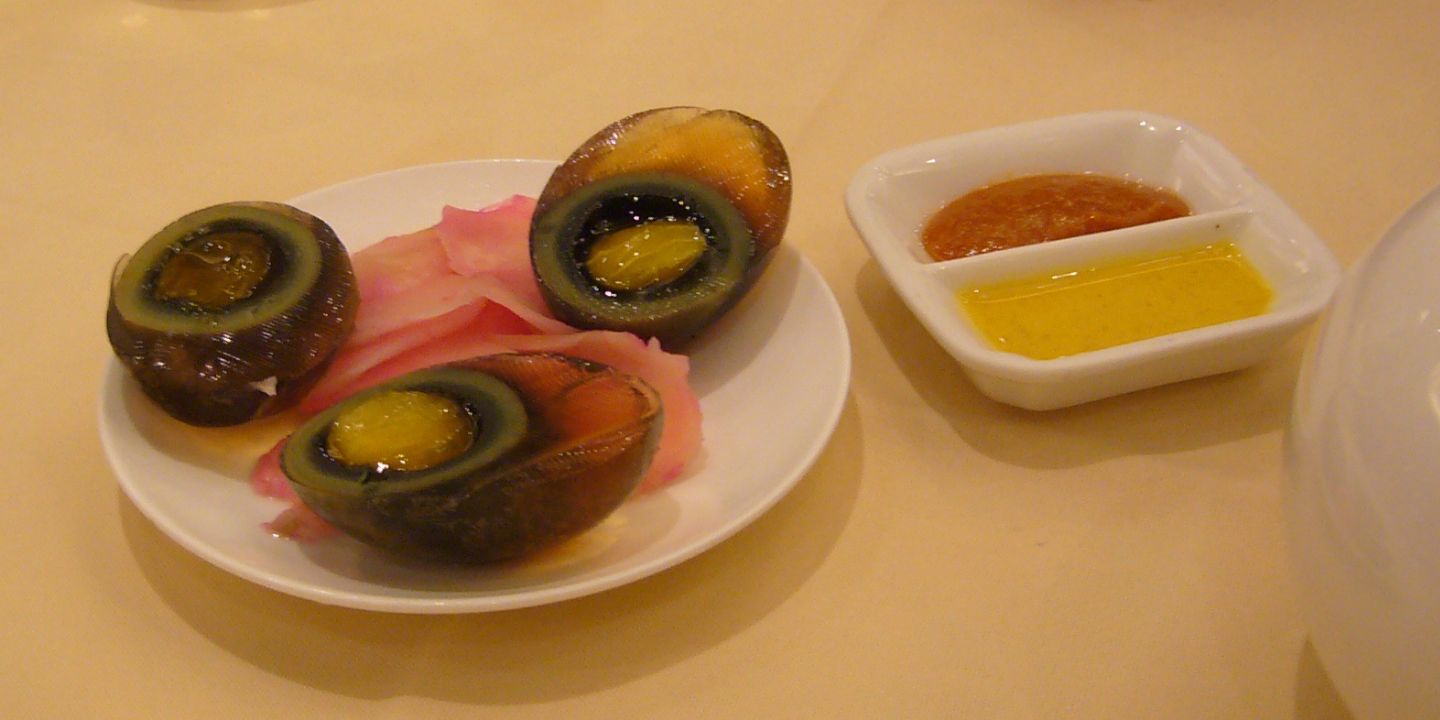Some Foods Will Never Not Be Delicious
Turns out, ancient humans weren't so different from us after all. Just like us, they enjoyed chowing down on noodles, delighting in street meat, and having a whole mess of pancakes on a Sunday morning. Passing food trends and wacky fusion dishes may be hijacking social media feeds, but the staples that aren't going anywhere are the ones that have been around forever. Beyond being a tasty dish, many of these are so culturally significant that they've come to define a country's identity. Here are 20 dishes with ancient origins that we'll never grow tired of.
1. Tamales
Tamales are a traditional dish served all over Mexico and other parts of Latin America, made of corn dough filled with various ingredients and cooked inside an envelope of banana leaves or corn husks. The dish has ancient Mesoamerican origins dating back to 8000 BC.
2. Sauerkraut
Despite being associated with Germand, the fermented cabbage dish known as sauerkraut actually has its roots in China, dating back over 2,000 years. Laborers working on the Great Wall would use rice wine to preserve cabbage. The Tartars in Russia's Ural Mountains likely brought the dish over to Europe.
3. Sausages
Sausages are essentially meat stuffed into animal intestines. There's evidence of this dish found on wall carvings in Mesopotamia, dating back 5,000 years. It's thought that ancient humans did this to preserve meat.
 Hasmik Ghazaryan Olson on Unsplash
Hasmik Ghazaryan Olson on Unsplash
4. Rice Pudding
You might think of rice pudding as kind of an old person's food. We're here to tell you, it way pre-dates your 80-year-old grandfather. People were eating rice pudding as far back as 6000 BC, as it was prescribed in the traditional Indian medicine practice, Ayurveda.
5. Pancakes
The five-year-old pancake fiends in your life might love to know that their favorite dish has roots in ancient Greece. Pancakes were traditionally consumed before Lent to use up all the dairy.
6. Tofu
Tofu is said to have originated in China 2,000 years ago. It's thought to have been invented by accident when a soybean mixture was curdled after being combined with salt.
7. Cheesecake
There may not have been a Cheesecake Factory in ancient times, but there certainly was cheesecake. It has its roots in ancient Greece, where they would make it with honey and wheat. A Greek physician even wrote a book about cheesecake-making in the 5th century.
8. Curry
Although it's undergone a lot of transformations to become the dish they serve at your local British pub, some early iteration of curry likely originated in what is now Pakistan, around 2500 BC. The word "curry" is likely derived from the Tamil word for sauce, "kari."
9. Pasta
It may shock you to learn that pasta didn't originate in Italy, but in China during the Shang Dynasty (1700-1100 BC). However, there's evidence of it existing in Italy as early as the fourth century BC, and it was certainly perfected there, with the culinary art of pasta making blossoming during the Renaissance.
10. Stew
In every film or TV program set in the Middle Ages, it seems someone is eating a rustic, meaty stew. Vikings and ancient Romans were known to make stews out of meat and fish, and even Amazonian tribes would make stews of turtle meat, using the shell as a pot.
11. Rice Pilaf
Rice pilaf is thought to have originated in ancient Persia. Rice cultivation in this region began at least as far back as the fourth century BC, and pilaf would've been one of many preparations developed to add flavor and variety.
12. Kebab
It's not just modern humans who love street meat. Kebabs can be traced back to ancient Persia and Mesopotamia as early as the 9th century BC.
13. Barbecue
Built around the core principle of "slaughter animal, apply heat," barbecue is the simplest form of cooking, and also the oldest. Humans have been doing this since prehistoric times, and it's just become increasingly more sophisticated over time.
14. Deviled Eggs
You may associate them with 1950s cocktail parties, but deviled eggs are actually much, much older than that. They have their roots in ancient Rome, where spiced and stuffed boiled eggs were served as a starter.
15. Hummus & Pita Bread
Hummus may have only become trendy in the West in the last 20 years, but Westerners were quite frankly late to the party. The first recipe was written down in 13th-century Egypt, but the dish itself is likely much older, as each of its ingredients has been cultivated since ancient times. Evidence suggests pita bread has also been enjoyed for over 4,000 years in the Middle East.
15. Lentil Soup
Archaeologists have discovered evidence of lentil cultivation in the Fertile Crescent as early as 10,000 years ago. Consumption of the legume in some form began in the Paleolithic period, and they are even mentioned in the bible.
16. Omelette
While the French word "omelette" didn't come about until the 16th century, the dish itself is much older, with some variation of it appearing in ancient cookbooks. The Persian herb-filled egg dish kuku sabzi is perhaps the earliest precursor to the omelette, dating back to the 5th century BC.
17. Kimchi
Like sauerkraut, kimchi has its origins in ancient times as a method to preserve vegetables. It was likely consumed in Korea as early as 3,000 years ago, though they wouldn't have used napa cabbage in their kimchi.
18. Halva
Halva is a fudge-like dessert made from sesame seeds. It spans back at least 1,200 years, its roots being in Persia or Mesopotamia. It's popular to this day all around the Middle East, Eastern Europe, and India, each region having its own distinct variety.
19. Dolma
Dolma is a dish of grape leaves stuffed with various ingredients like rice and meat. The name "dolma," meaning "to fill" in Turkish, dates back 1,000 years, but the dish itself likely has origins in ancient Mesopotamia or Persia.
20. Custard
Early versions of custard likely involved mixing eggs, milk, and honey and originated in ancient Rome. It only took around 1,300 years for someone in the Middle Ages to think of pairing it with pastry, creating the custard tart.




























